25000 TAGS
Zhan Wang: 86 Divinity Figures
Location: Long March Space, Beijing (formerly known as 25000 Cultural Transmission Center)
Duration: May 13 – June 4, 2008
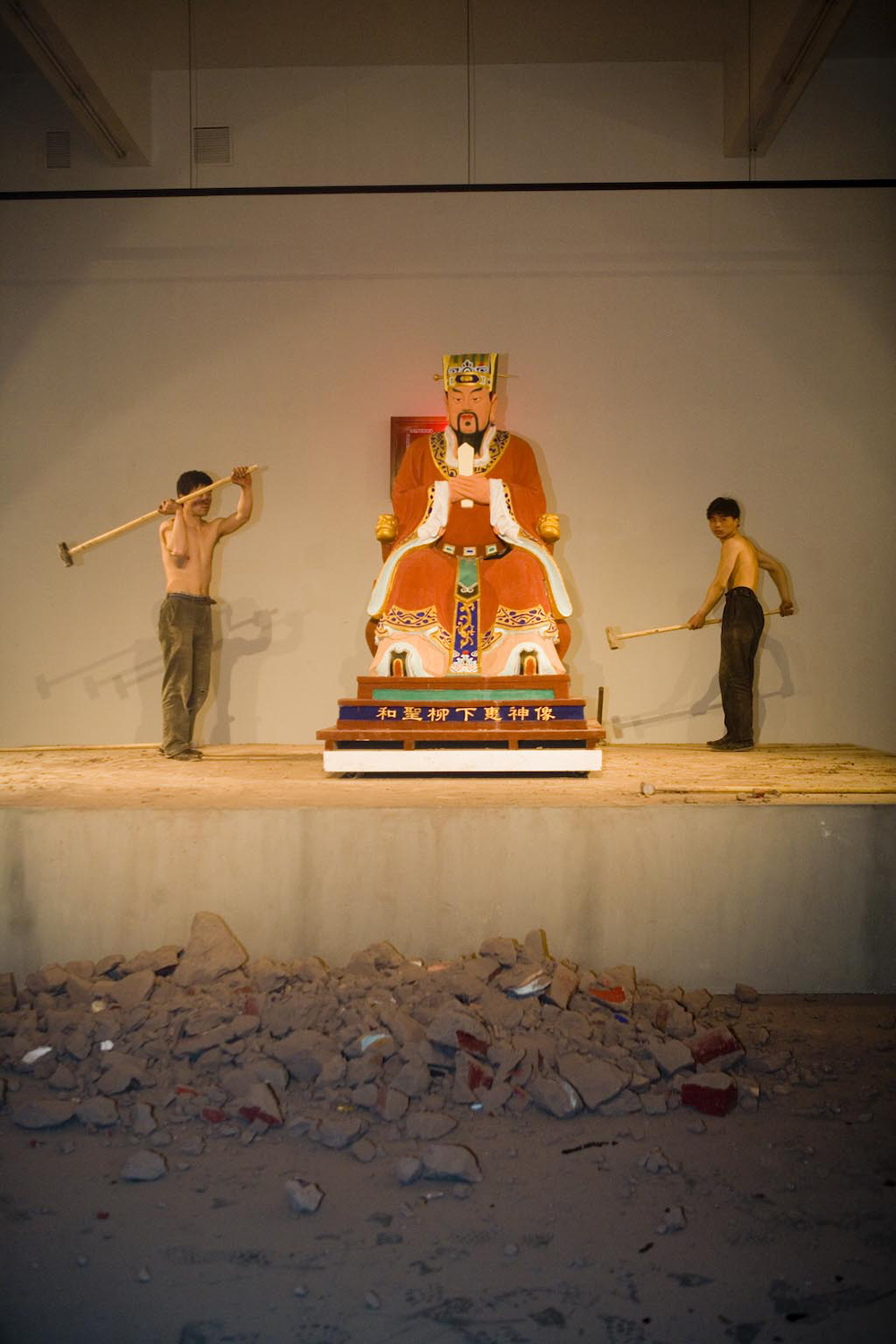
Artist Statement
86 Divinity Figures is a new month-long project by artist Zhan Wang. This series of performative accumulative acts, involving the destruction of 85 divinity figures, calls forth the artist’s investigation into his personal family history, which he has traced back to over 2000 years. Through the action of making and destroying, this project generates questions of renewal, ancestral lineage and the desire to break from the past, while always being constrained and re-incorporated by our genealogy. Clay divinity figures are the deification of celebrated individuals into allegorical representations referencing an imagined ideal. Zhan Wang has traced his family lineage back 86 generations to Zhan Jiqin, a local official who is considered by the Confucian philosopher Mencius to be one of the four great sages in Chinese history for his promulgation of the idea of “hé” (和: peace, harmony). More commonly known under his posthumous title “Liu Xiahui”, clay figures of him are honored in temples throughout the region of Shandong Province.
Curiously, the divinity of the “saint thief” Zhan Zhi is also honored in this geographical region. He was the earliest figure to be widely honored by pirates, thieves, and bandits, promulgating the idea of honor within their acts of rebellion. Although difficult to establish historically, he is asserted to be the younger brother of Zhan Jiqin. Why this linkage is maintained can only be speculated, but it presents an alternate background narrative to the idealized figure of the great sage – serving as a foil, a darker underside to balance the esteemed reputation of his older brother. Paradoxically, throughout the changes in dynastic rule and ensuing political ruptures, numerous temples erected to honor Zhan Ziqin have continually been destroyed, whereas the temples constructed in honor of his said brother, the “Saint Thief”, have remained unscathed. During the Cultural Revolution, the “saint thief” was even viewed as an example of a “peasant rebellion leader.” This phenomenon represents an eternal truth about human nature regarding the cycle of destruction and creation and the continual flux in perspective concerning the transmission of cultural value and social ethics.
Today, the Zhan family clan, the local community, as well as people from across China, have pushed to reconstruct the temple for the great sage Zhan Jiqin as homage to current society’s seeming peace and harmony. Zhan Wang has taken the responsibility of creating the sculpture of Zhan Jiqin for the temple; however, he has employed a different method. For this undertaking Zhan Wang will bring 4 identical statues into Long March Space that have been molded and produced from clay, hand-painted in the style of divinity figures commonly found in ancestral halls and temples throughout China. Weighing nearly one ton each, the artist will subsequently smash each figure, leaving the remnants of the act as a gradual accumulation, a memory of violence and defacement. The final clay figure, along with video and photographic documentation of the entire process, will be donated to the community temple in Zhan Wang’s hometown in Shandong Province, as the new divinity figure for the temple. The smashing of this figure will be left to future generations. Zhan Wang’s 86 Divinity Figures project reflects Zhan Wang’s continual investigative pondering of China’s modernization and how peace and harmony is often subsumed by individual greed and avarice. This series of conceptual destructive acts questions the representation of imagined ideals by implying their inherent antithesis.
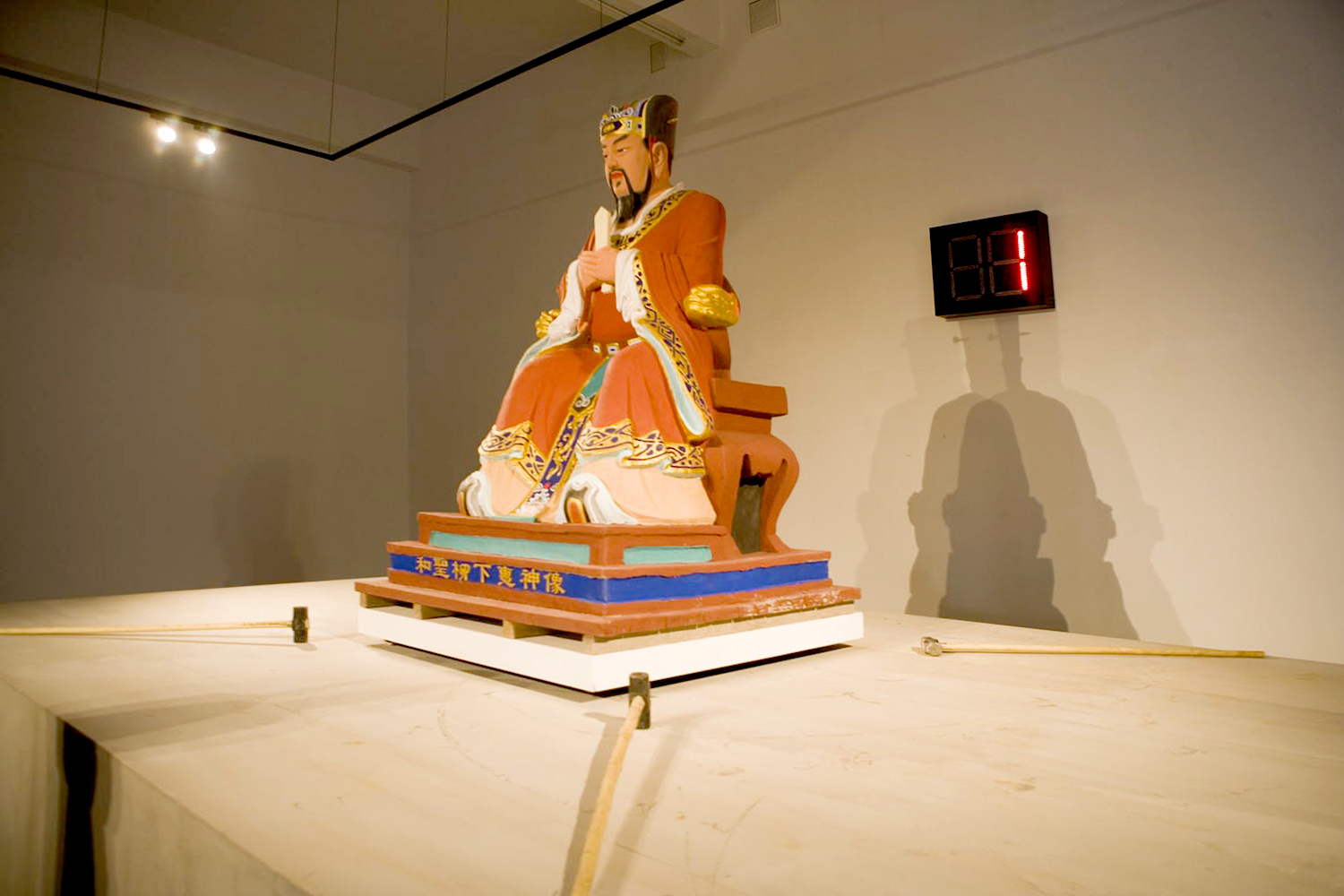
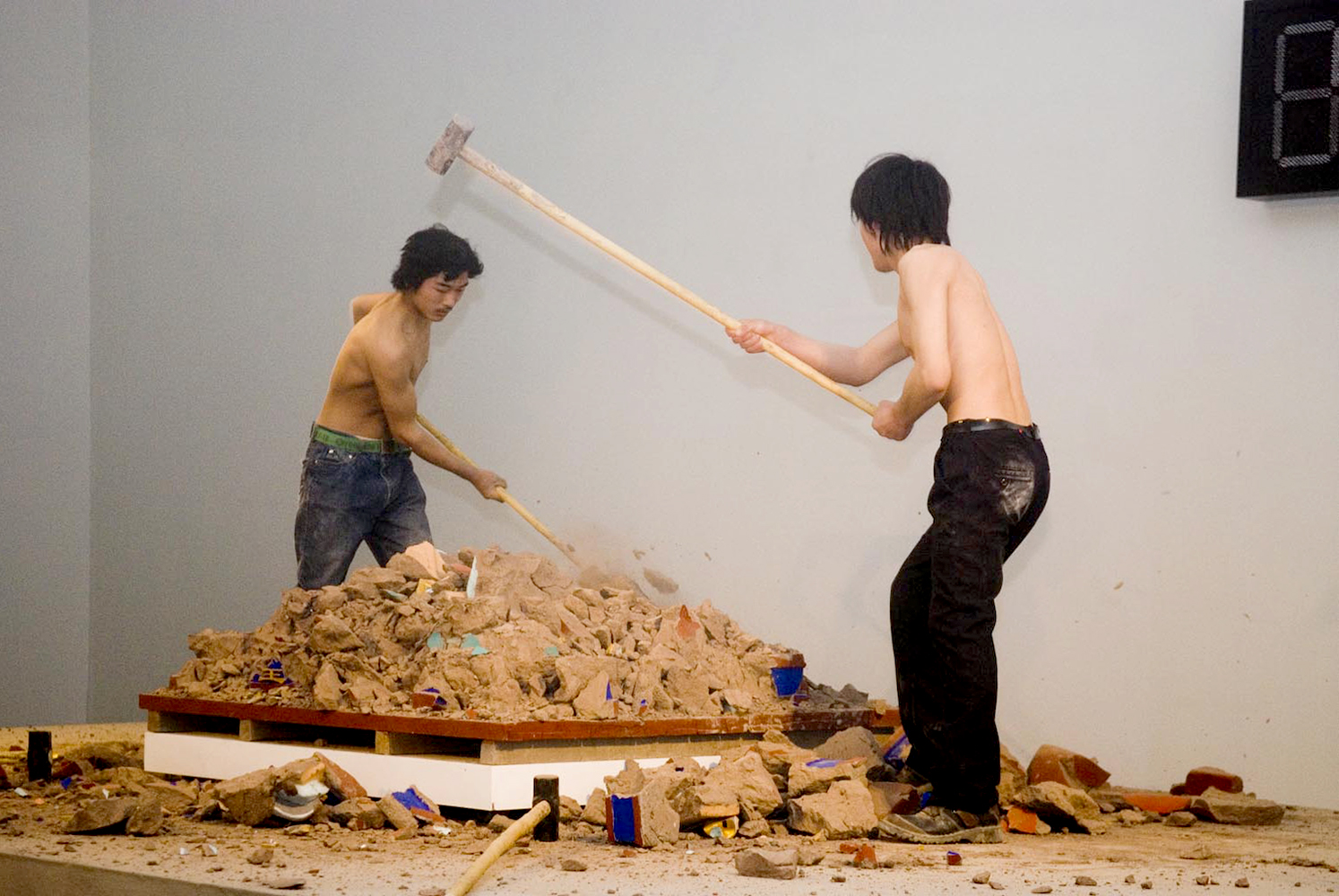
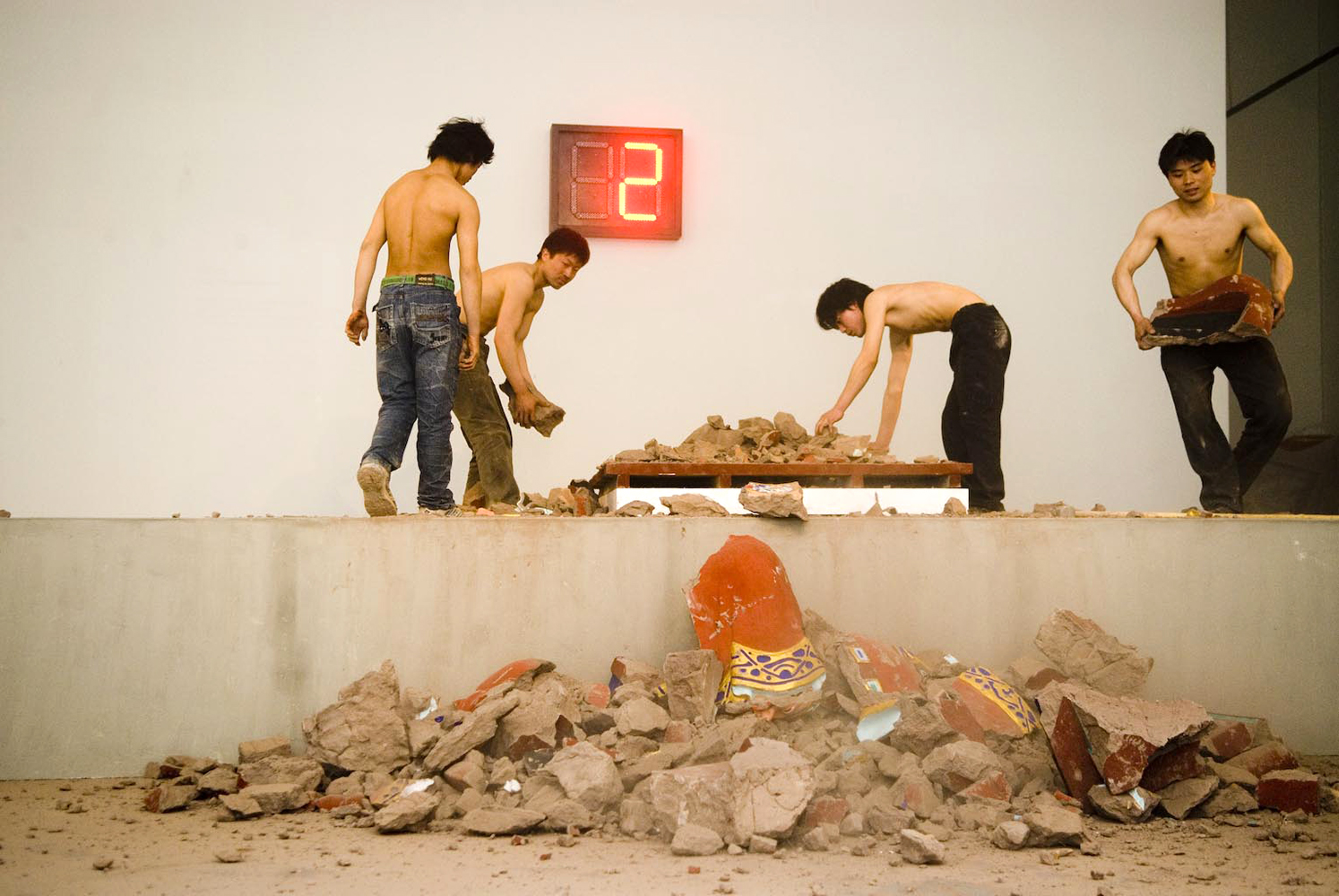
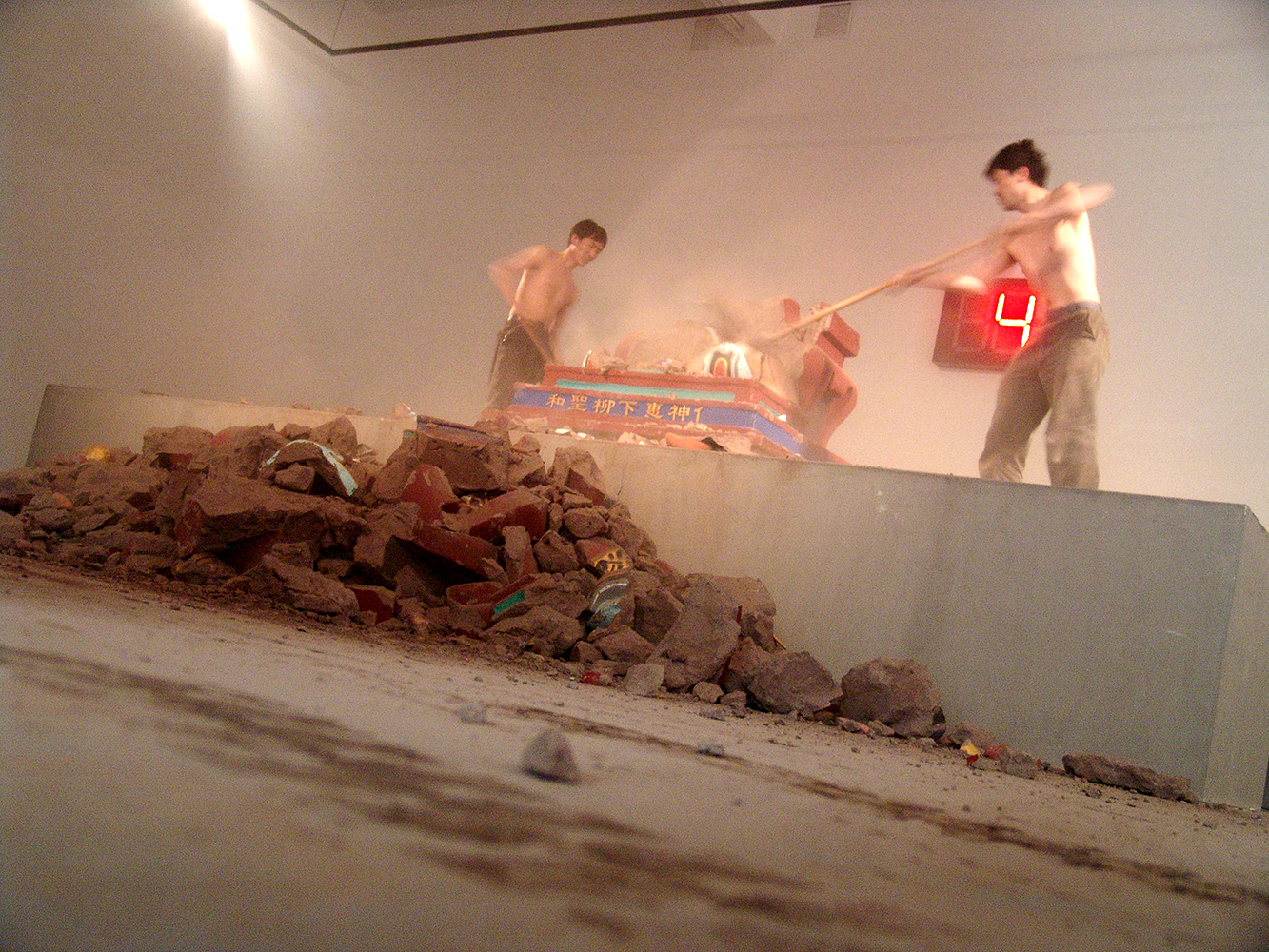

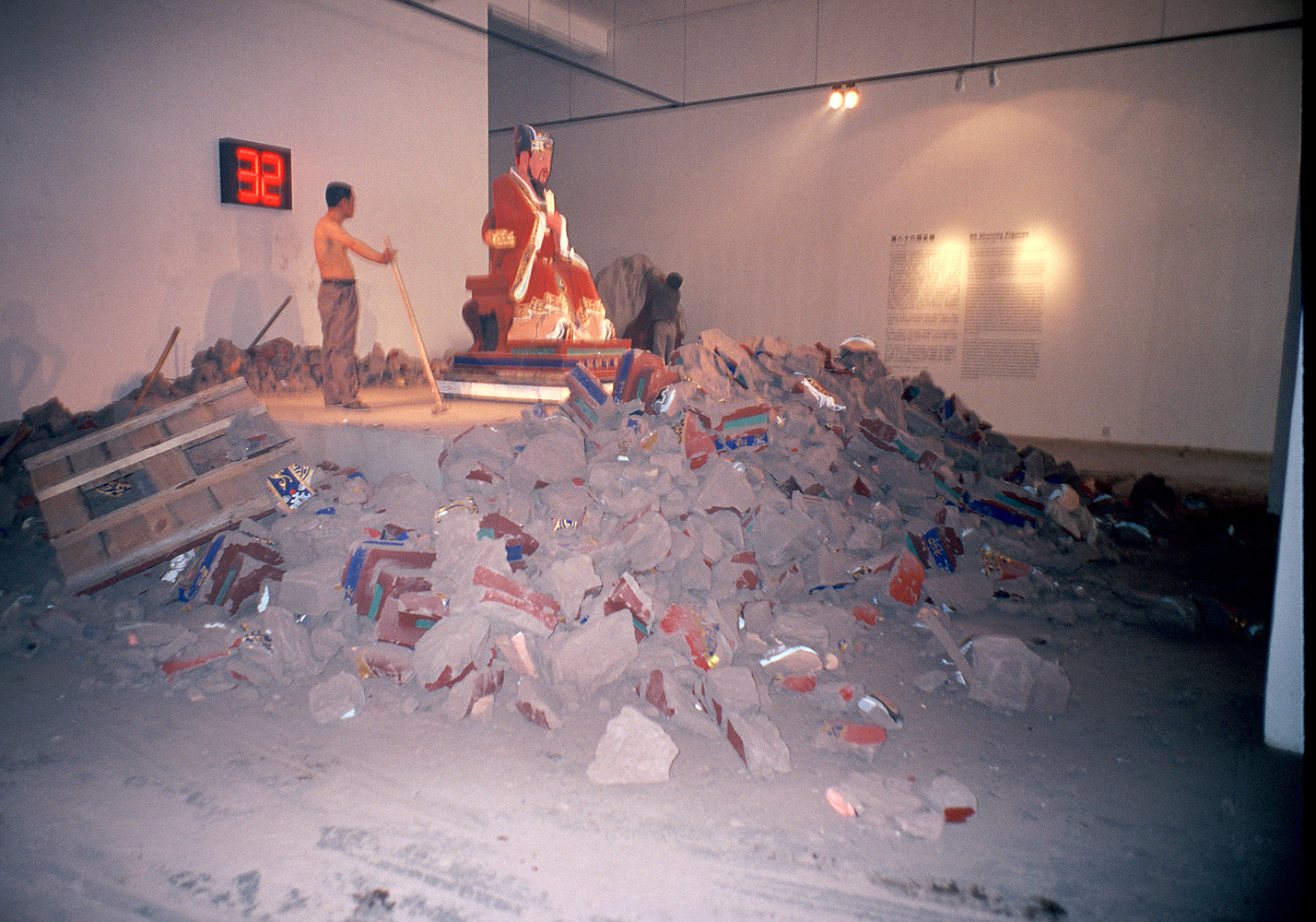

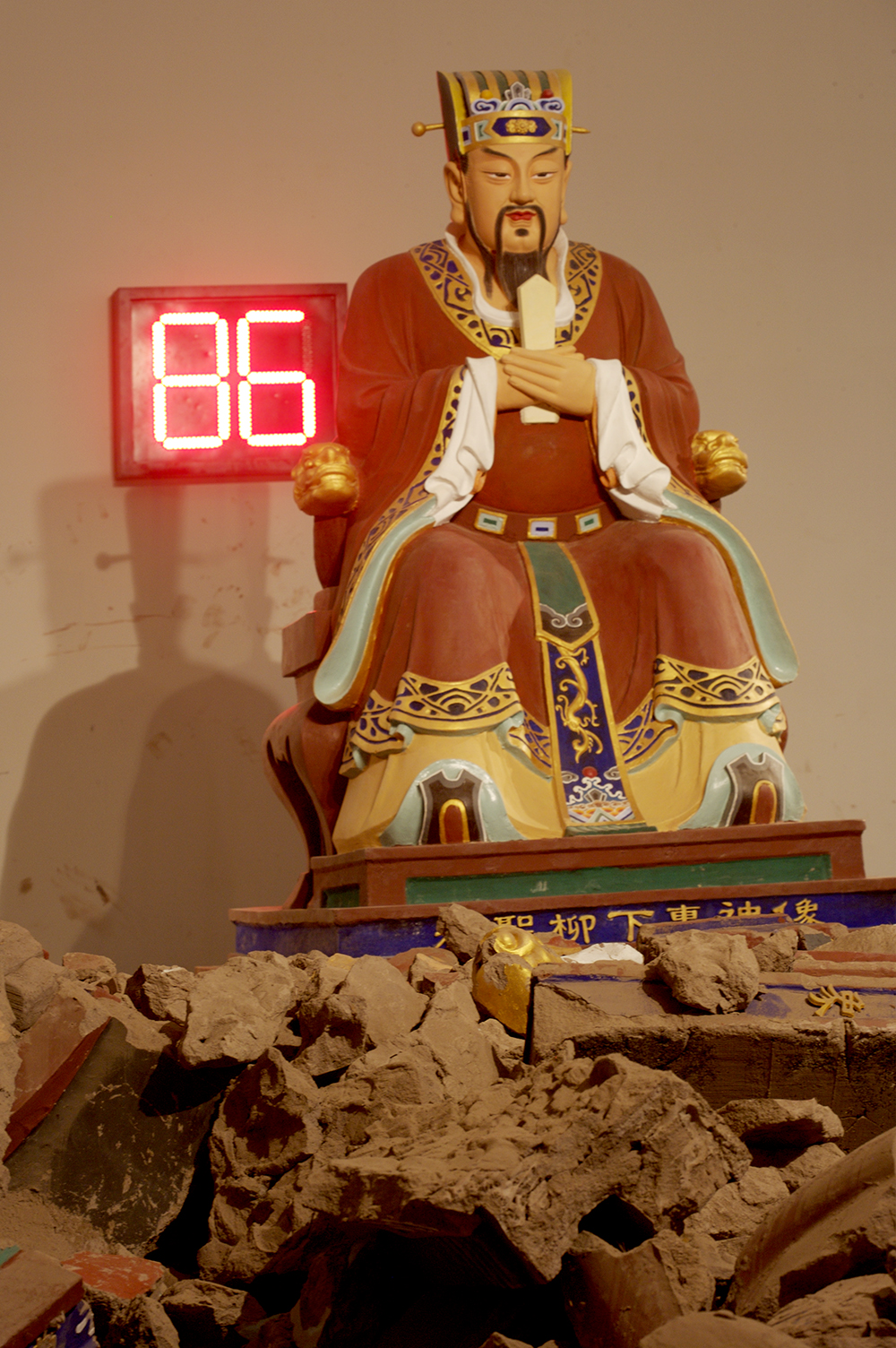
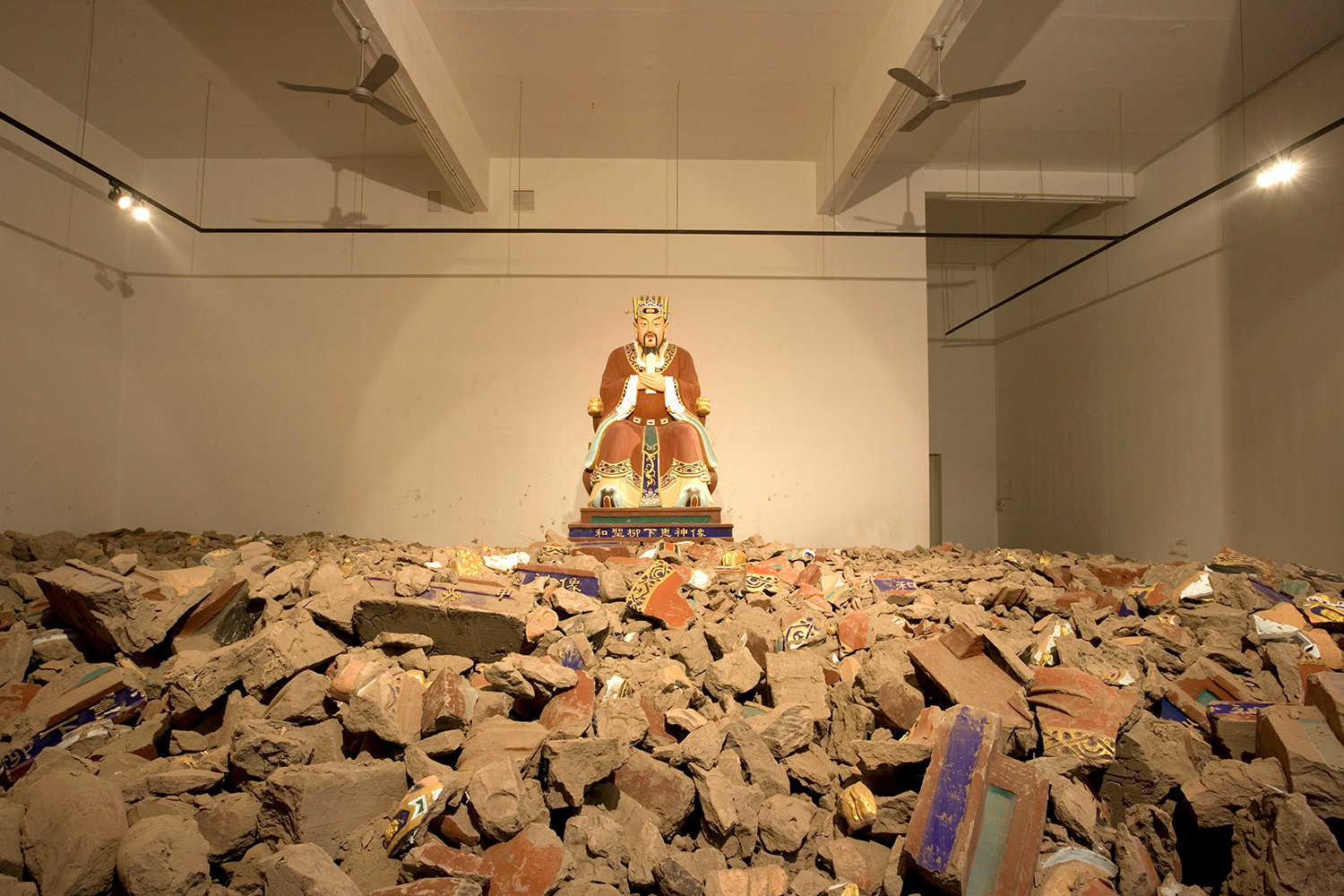
Artist Statement
86 Divinity Figures is a new month-long project by artist Zhan Wang. This series of performative accumulative acts, involving the destruction of 85 divinity figures, calls forth the artist’s investigation into his personal family history, which he has traced back to over 2000 years. Through the action of making and destroying, this project generates questions of renewal, ancestral lineage and the desire to break from the past, while always being constrained and re-incorporated by our genealogy. Clay divinity figures are the deification of celebrated individuals into allegorical representations referencing an imagined ideal. Zhan Wang has traced his family lineage back 86 generations to Zhan Jiqin, a local official who is considered by the Confucian philosopher Mencius to be one of the four great sages in Chinese history for his promulgation of the idea of “hé” (和: peace, harmony). More commonly known under his posthumous title “Liu Xiahui”, clay figures of him are honored in temples throughout the region of Shandong Province.
Curiously, the divinity of the “saint thief” Zhan Zhi is also honored in this geographical region. He was the earliest figure to be widely honored by pirates, thieves, and bandits, promulgating the idea of honor within their acts of rebellion. Although difficult to establish historically, he is asserted to be the younger brother of Zhan Jiqin. Why this linkage is maintained can only be speculated, but it presents an alternate background narrative to the idealized figure of the great sage – serving as a foil, a darker underside to balance the esteemed reputation of his older brother. Paradoxically, throughout the changes in dynastic rule and ensuing political ruptures, numerous temples erected to honor Zhan Ziqin have continually been destroyed, whereas the temples constructed in honor of his said brother, the “Saint Thief”, have remained unscathed. During the Cultural Revolution, the “saint thief” was even viewed as an example of a “peasant rebellion leader.” This phenomenon represents an eternal truth about human nature regarding the cycle of destruction and creation and the continual flux in perspective concerning the transmission of cultural value and social ethics.
Today, the Zhan family clan, the local community, as well as people from across China, have pushed to reconstruct the temple for the great sage Zhan Jiqin as homage to current society’s seeming peace and harmony. Zhan Wang has taken the responsibility of creating the sculpture of Zhan Jiqin for the temple; however, he has employed a different method. For this undertaking Zhan Wang will bring 4 identical statues into Long March Space that have been molded and produced from clay, hand-painted in the style of divinity figures commonly found in ancestral halls and temples throughout China. Weighing nearly one ton each, the artist will subsequently smash each figure, leaving the remnants of the act as a gradual accumulation, a memory of violence and defacement. The final clay figure, along with video and photographic documentation of the entire process, will be donated to the community temple in Zhan Wang’s hometown in Shandong Province, as the new divinity figure for the temple. The smashing of this figure will be left to future generations. Zhan Wang’s 86 Divinity Figures project reflects Zhan Wang’s continual investigative pondering of China’s modernization and how peace and harmony is often subsumed by individual greed and avarice. This series of conceptual destructive acts questions the representation of imagined ideals by implying their inherent antithesis.










